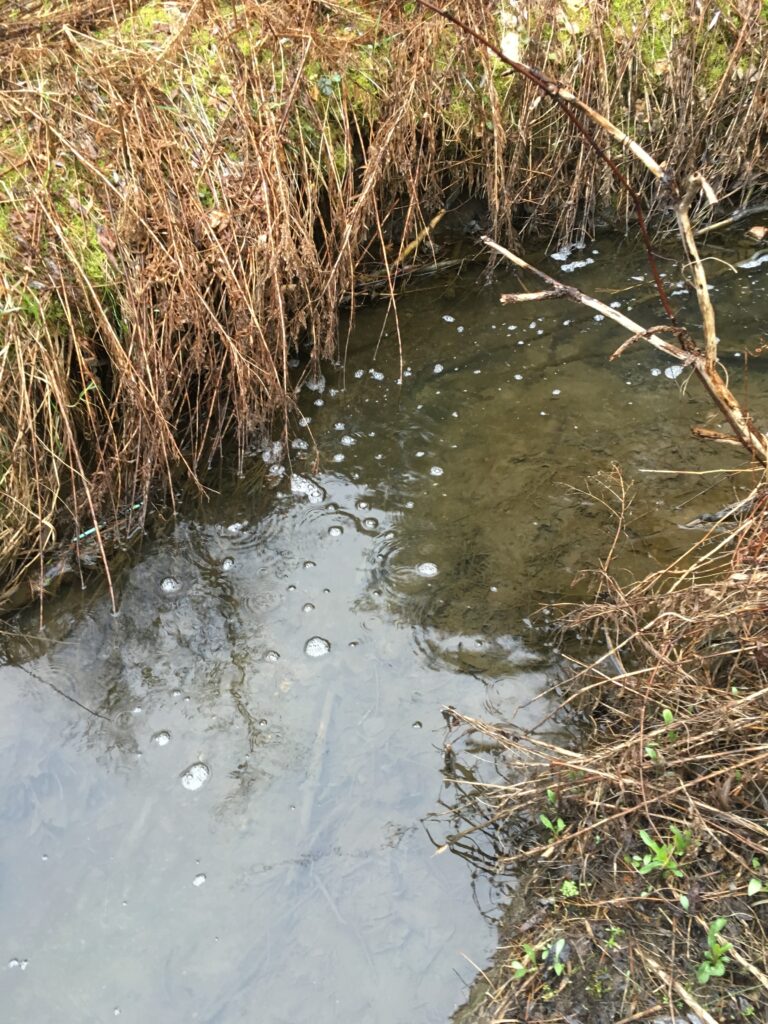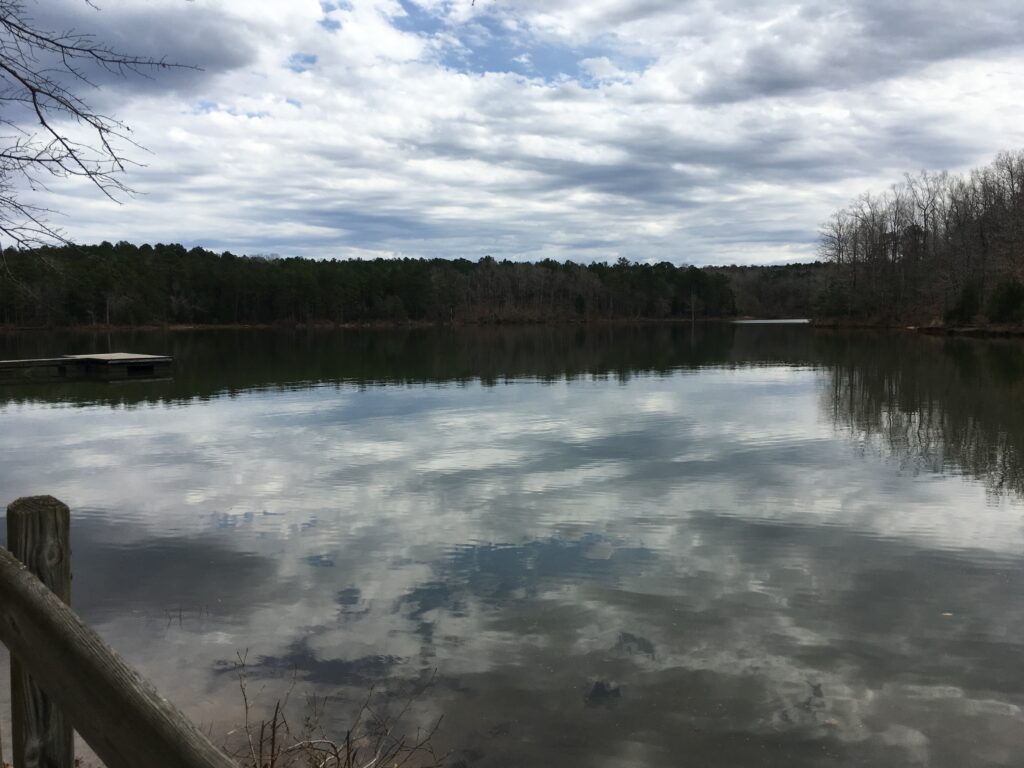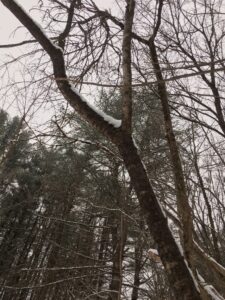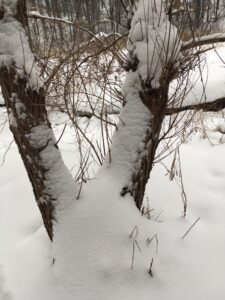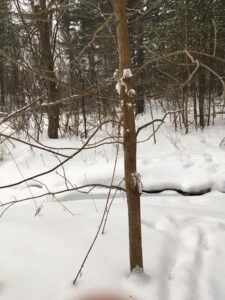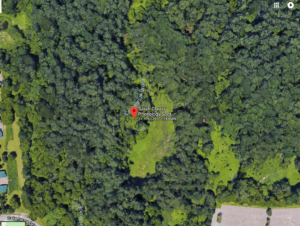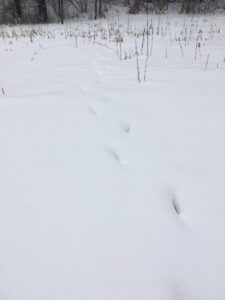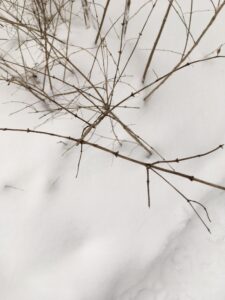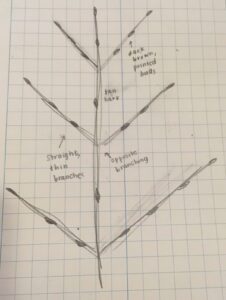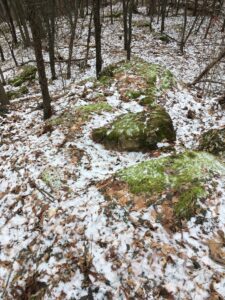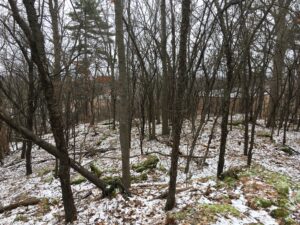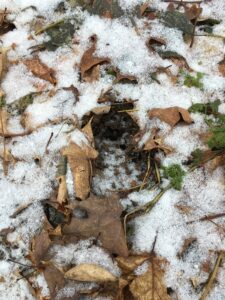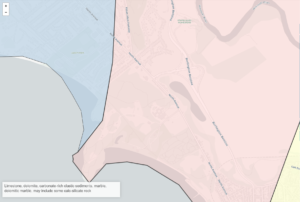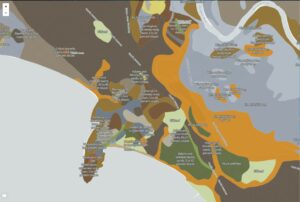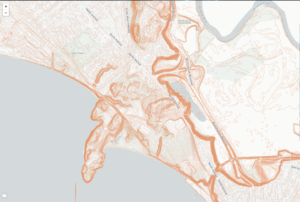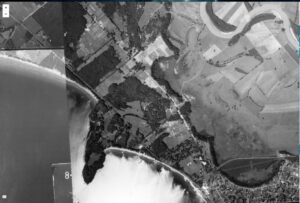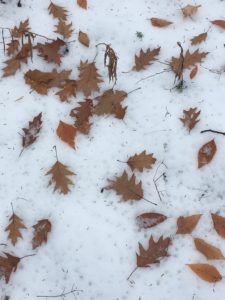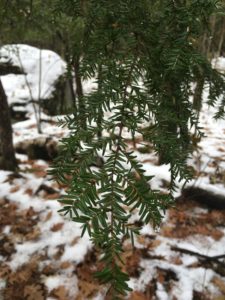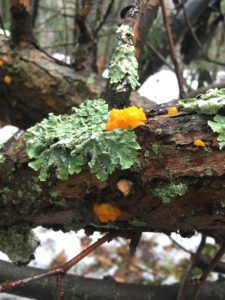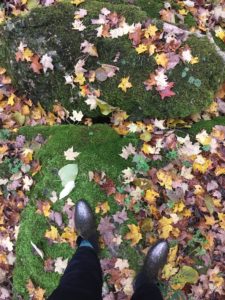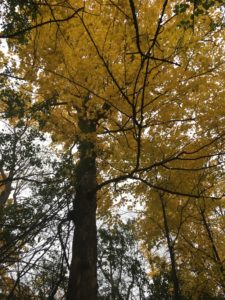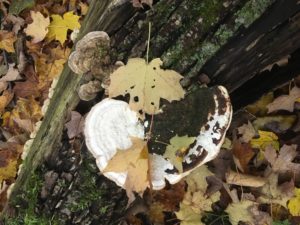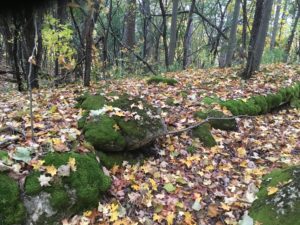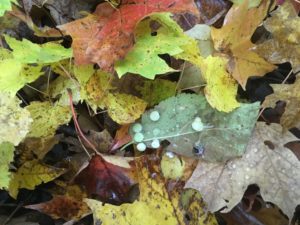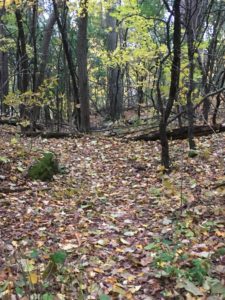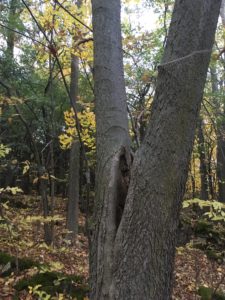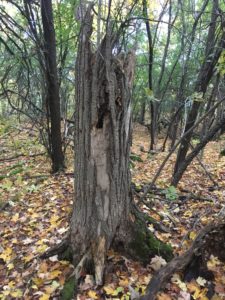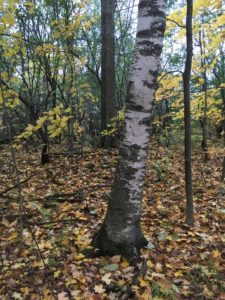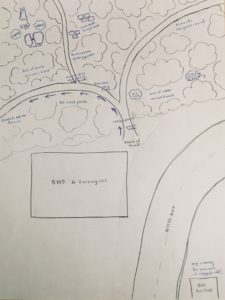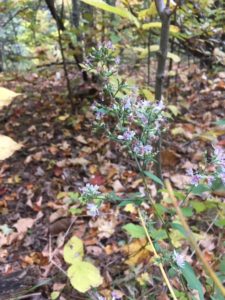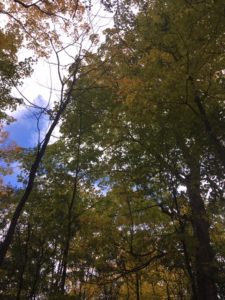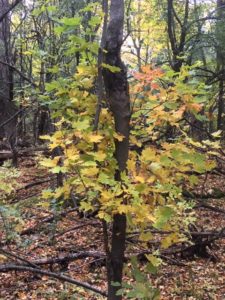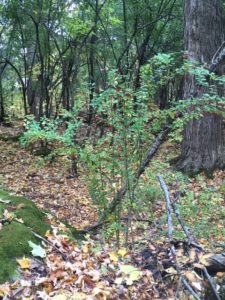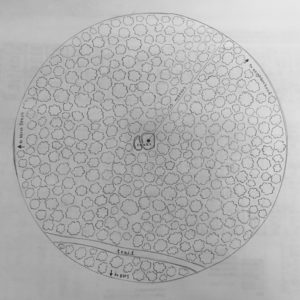In terms of phenological changes, my little corner of the forest is starting to truly feel like spring. Birds are abundant, and species I haven’t seen since fall are returning. The canopy is greening as buds on larger trees like the ash trees along the river begin to open. I imagine that in a week or two, my site will begin to fill with mayflies and other insect species. Right now, it’s still a little too cold!
Nature and culture intertwine in many ways at my place. First of all, Centennial Woods is used as an “outdoor classroom” by many UVM classes. When I visit, I am rarely alone on the trails. This is one of the things I love most about the university’s approach to ecology; hands on learning is encouraged. I have definitely reinforced much of my knowledge about seasonal changes in the land and tree species by visiting this spot regularly. Secondly, Centennial Woods is centrally located in Burlington and is surrounded by homes and businesses. This stretch of relatively undisturbed forest is one place in the “urban” area of Burlington where people can access and enjoy the natural world. Having places like this is important for conservation because people have a tangible reminder of the importance of natural areas for native flora and fauna.
I don’t really consider myself a part of my place. When I visit, I try to leave as little impact as possible. I don’t rely on the environment of Centennial Woods for food or shelter, and I don’t think that I have had much of an effect in changing or shaping the area. That being said, I do find my phenology spot a really reassuring place to visit, and it does in some ways feel like home. I have always been drawn to water, whether it’s small streams, ponds, lakes, or even the ocean. I also feel really at home in forested areas, since I grew up walking and hiking through Vermont forests. Being in an area that is not dominated by and crowded with people is a calming and rejuvenating experience, and I love going down to listen to the sounds of the stream, explore the details of the landscape, and watch for birds and amphibians around the water. In this way, I identify my site as a familiar place even though I don’t think that I am part of it.

